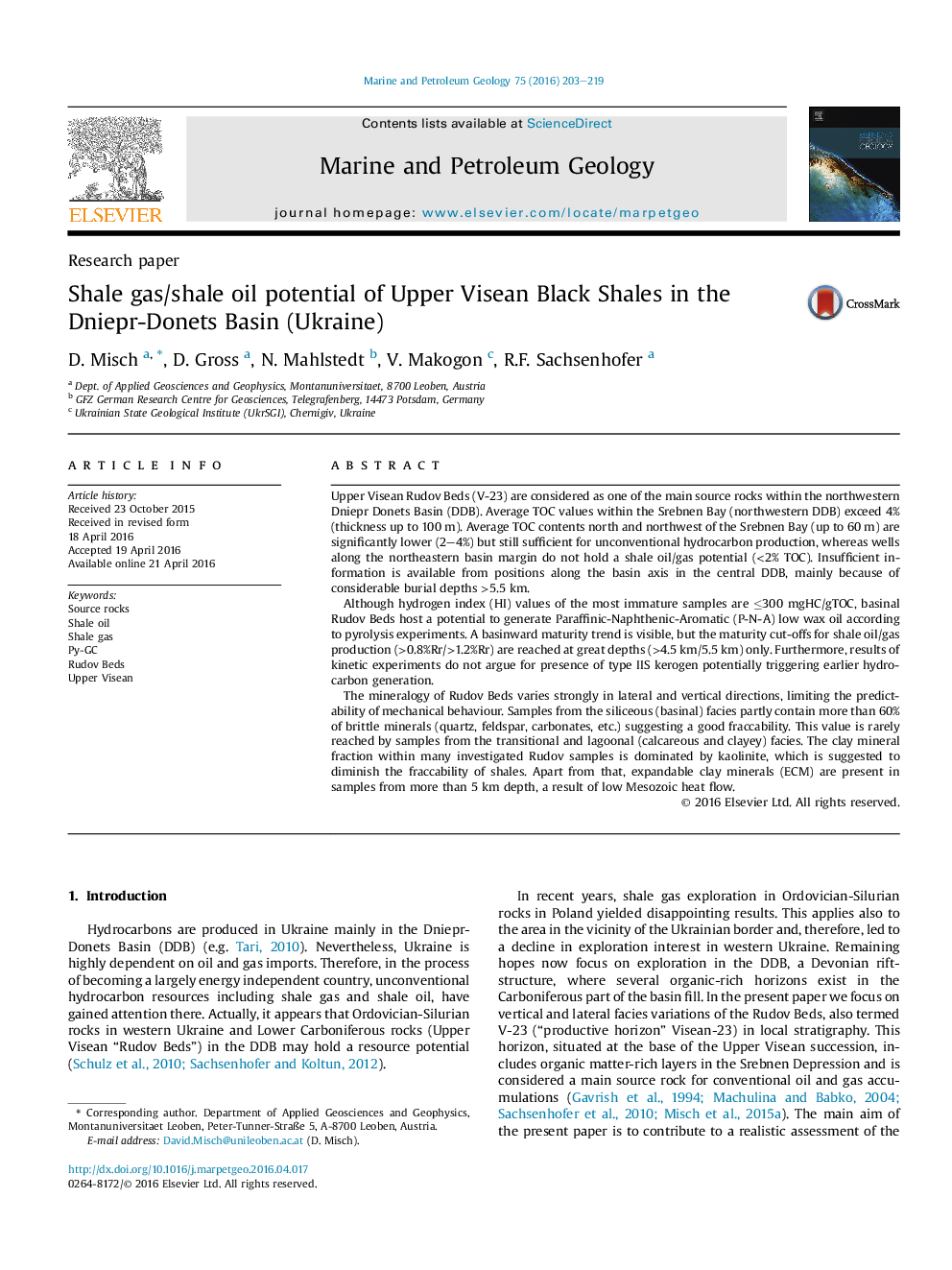| کد مقاله | کد نشریه | سال انتشار | مقاله انگلیسی | نسخه تمام متن |
|---|---|---|---|---|
| 6434357 | 1637152 | 2016 | 17 صفحه PDF | دانلود رایگان |

- Basinal Rudov Beds host oil potential.
- Highest average TOC contents occur within the Srebnen Bay (>4%).
- Wells along the northeastern basin margin do not hold a shale oil/gas potential.
- The mineralogy of Rudov Beds varies strongly in lateral and vertical directions.
- Cut-off maturity for shale oil (0.8%Rr) is reached only at depths >4.0--4.5 km.
Upper Visean Rudov Beds (V-23) are considered as one of the main source rocks within the northwestern Dniepr Donets Basin (DDB). Average TOC values within the Srebnen Bay (northwestern DDB) exceed 4% (thickness up to 100 m). Average TOC contents north and northwest of the Srebnen Bay (up to 60 m) are significantly lower (2-4%) but still sufficient for unconventional hydrocarbon production, whereas wells along the northeastern basin margin do not hold a shale oil/gas potential (<2% TOC). Insufficient information is available from positions along the basin axis in the central DDB, mainly because of considerable burial depths >5.5 km.Although hydrogen index (HI) values of the most immature samples are â¤300 mgHC/gTOC, basinal Rudov Beds host a potential to generate Paraffinic-Naphthenic-Aromatic (P-N-A) low wax oil according to pyrolysis experiments. A basinward maturity trend is visible, but the maturity cut-offs for shale oil/gas production (>0.8%Rr/>1.2%Rr) are reached at great depths (>4.5 km/5.5 km) only. Furthermore, results of kinetic experiments do not argue for presence of type IIS kerogen potentially triggering earlier hydrocarbon generation.The mineralogy of Rudov Beds varies strongly in lateral and vertical directions, limiting the predictability of mechanical behaviour. Samples from the siliceous (basinal) facies partly contain more than 60% of brittle minerals (quartz, feldspar, carbonates, etc.) suggesting a good fraccability. This value is rarely reached by samples from the transitional and lagoonal (calcareous and clayey) facies. The clay mineral fraction within many investigated Rudov samples is dominated by kaolinite, which is suggested to diminish the fraccability of shales. Apart from that, expandable clay minerals (ECM) are present in samples from more than 5 km depth, a result of low Mesozoic heat flow.
Journal: Marine and Petroleum Geology - Volume 75, August 2016, Pages 203-219